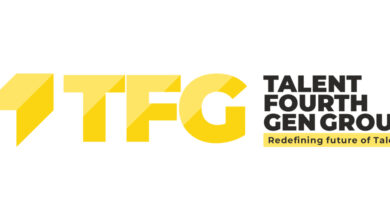Quadric Reimagines General-Purpose Parallel Processing with an All-New Architecture Optimized for On-Device AI

Unified Silicon and Software Architecture Eases Integration Complexities, Gives Developers Peace of Mind with an Open Ecosystem
BURLINGAME, Calif.–(BUSINESS WIRE)–#AI–Quadric (quadric.io), an innovator in high-performance edge processing, has introduced a unified silicon and software platform that unlocks the power of on-device AI. Built to accelerate computation speeds while reducing power consumption, Quadric’s new general-purpose processor platform meets the computing needs of today’s increasingly autonomous world of smart sensors, IoT devices, factory automation, robots, 5G infrastructure and medical imaging. The platform is designed to handle any AI algorithm, as well as classic algorithms used for tasks such as digital signal processing, high-performance computing and image processing.
The Quadric processor architecture is based on a hybrid data-flow and Von Neumann machine that enables high-performance on-device computing for demanding workloads including neural networks, machine learning, computer vision and basic linear algebra subprograms (BLAS). The instruction-driven architecture enables software manageability of hardware to keep pace with the ever-changing demands of on-device computing. The open software programming model enhances ease of use by enabling developers to express graph-based and non-graph-based algorithms in unison.
“With intelligence rapidly migrating from the cloud to the network edge, the full stack, from silicon to software, must be completely re-architected to meet the unique requirements of on-device AI,” said Veerbhan Kheterpal, co-founder and CEO of Quadric. “We’ve reimagined a general-purpose processor architecture and built it from scratch with the developer in mind. Developers want a versatile, high-performance processing platform that can support any type of AI and machine learning algorithm with an open ecosystem that gives them peace of mind and unleashes their design creativity.”
Developers often struggle with deploying AI-based algorithms at scale. Existing solutions force the design of heterogenous systems composed of CPUs, GPGPUs, FPGAs, and AI chips. This leads to higher power, larger latency, and complex software integration. Quadric’s unified platform delivers accelerator-like performance with processor-like flexibility. This integrated approach enables developers to create on-device AI applications that support near instantaneous decision making at the network edge.
Sampling Now: Multicore Processor Tuned for On-Device AI
The Quadric platform is built around the q16 processor architecture, which combines the software flexibility and programmability of a Turing complete parallel processor with the efficiency of a dataflow-based accelerator. The q16 processor is the first silicon-proven instance of Quadric’s novel architecture optimized for on-device AI and low-power processing of large data streams.
Quadric’s first-generation q16 processor integrates a 16 x 16 array of general-purpose Vortex Cores working in parallel to process computationally demanding algorithms. The highly scalable quadric architecture is portable to advanced nodes down to 7 nm and 5 nm, with power consumption ranging from hundreds of mW (at 16 nm) up to 20 Watts.
Quadric Developer Kit: Simplifying Custom Code and No-Code Development
To accelerate evaluation and development, Quadric offers an easy-to-use developer kit that hosts the first-generation q16 processor in a M.2 2280 (22 mm wide x 80 mm long) form factor. The developer kit supports transfer speeds up to PCIe Gen 4 x 2. The system contains 4 GB of external memory directly mapped to the q16 processor’s universal memory space. The entire M.2 system consumes a maximum of 5.5W TDP.
Included with the M.2 System, the Quadric SDK enables developers to combine deep learning backbones with source-level control to build advanced AI algorithms and model algorithm performance. The processor’s powerful data-parallel processing capabilities are exposed to the developer to provide full design flexibility using Clang/LLVM.
The Quadric architecture supports all types of data-parallel algorithms through Source Mode within the SDK. Source Mode gives developers source-level C++ control of the processor’s architectural features, such as control flow, random access and optimized data-parallel execution. Examples of Source Mode kernels include GEMM, 1D and 2D N-point FFT, and image filtering. As deep neural networks (DNNs) become more complex, Source Mode also allows developers to express custom operations.
Quadric will release an SDK update later this summer that supports no-code Graph Mode complete with optimized support for common open-source neural networks. Graph Mode will enable developers to ingest and schedule neural networks in TensorFlow or ONNX formats. Supported neural networks will include MobileNetV2, ResNet-50 and VGG16. In addition, the new SDK release will include a TVM-based scheduler for automatically compiling and deploying AI models.
The flexibility of Quadric’s software gives developers the freedom to develop and deploy every algorithm on one architecture, with the peace of mind that they can easily update AI and DNN functionality through over-the-air software updates for years to come.
Availability
Samples of Quadric’s first-generation q16 processor are available now in the M.2 2280 form factor. To request q16 processor samples and learn more about the Quadric platform, architecture and developer kit, visit quadric.io.
About Quadric
Founded in 2016 and based in Burlingame, California, Quadric is building a unified, end-to-end hardware and software architecture optimized for on-device computing at the network edge. Quadric’s full-stack platform is designed to meet the computationally intensive needs of next-generation autonomous products, the industrial IoT, robots and more. By enabling the fastest computation imaginable at lower power, Quadric is ushering in a new world of possibilities for developers. Quadric’s open software ecosystem makes it easier for developers to work with parallel code, reduces duplication and streamlines development edge computing applications. Learn more at quadric.io.
Contacts
Green Flash Media for Quadric
Jeremy Hyatt
[email protected]




